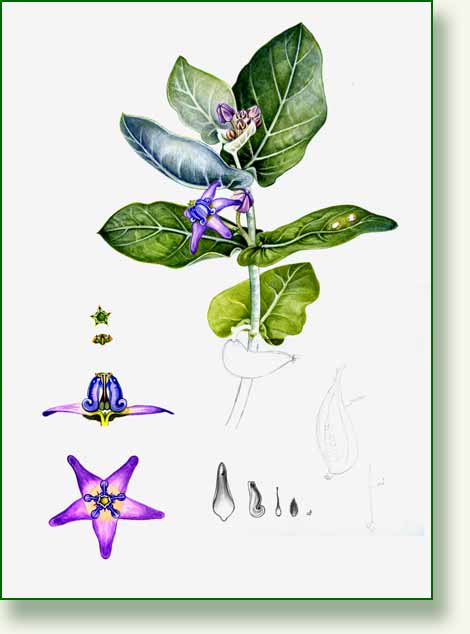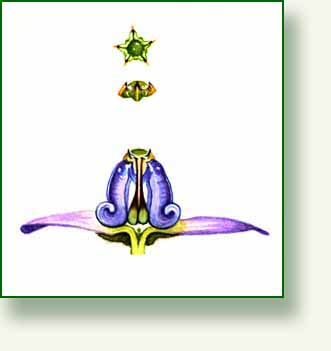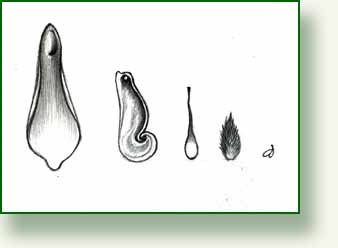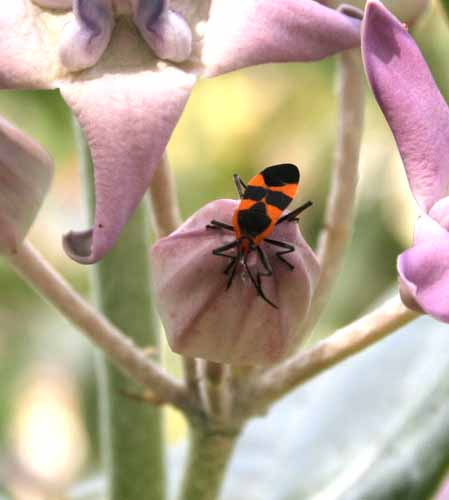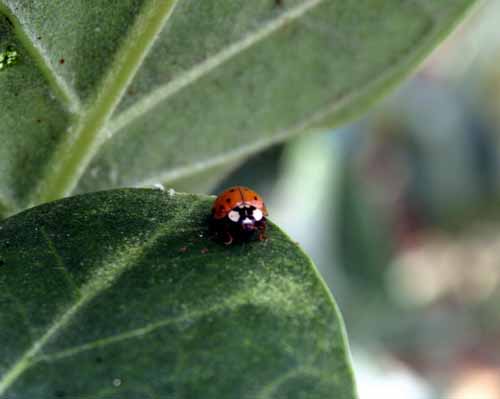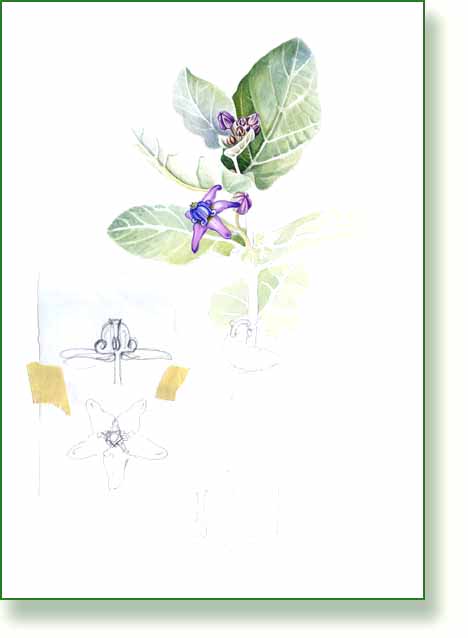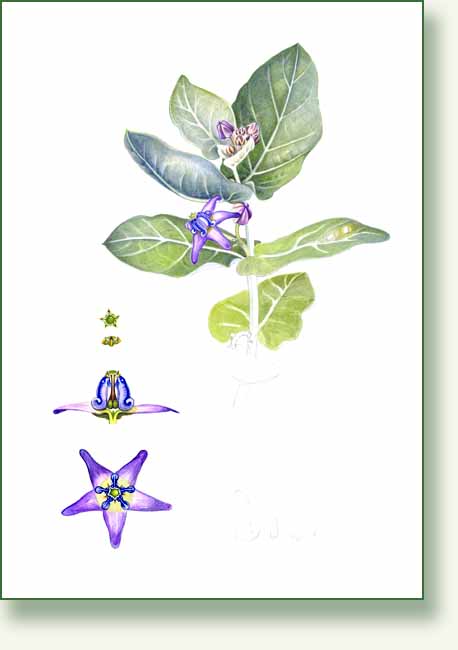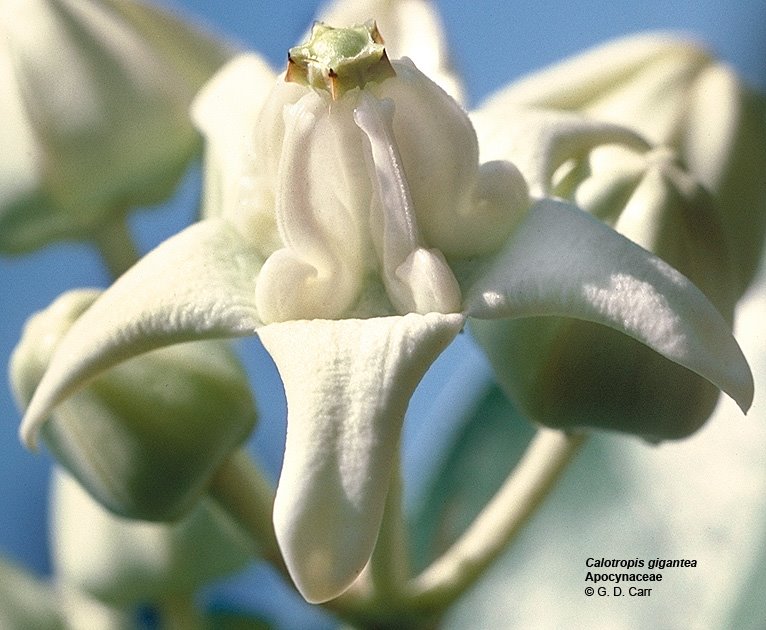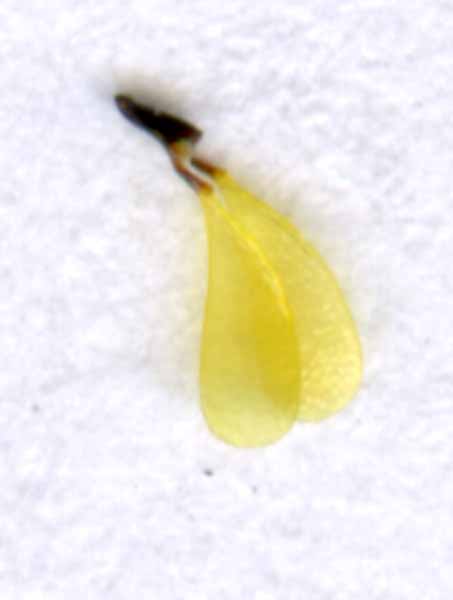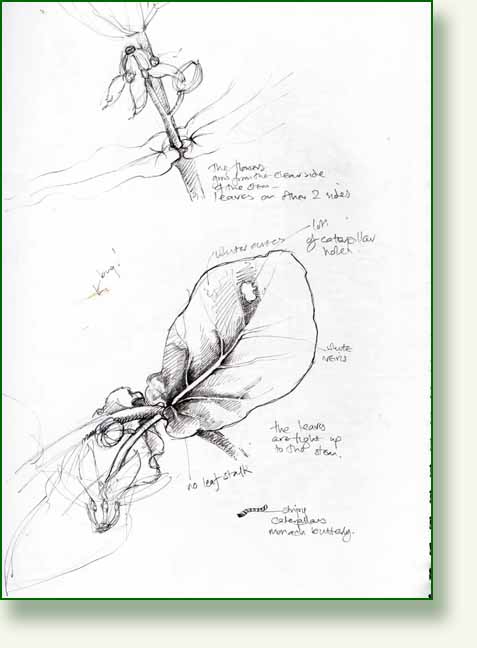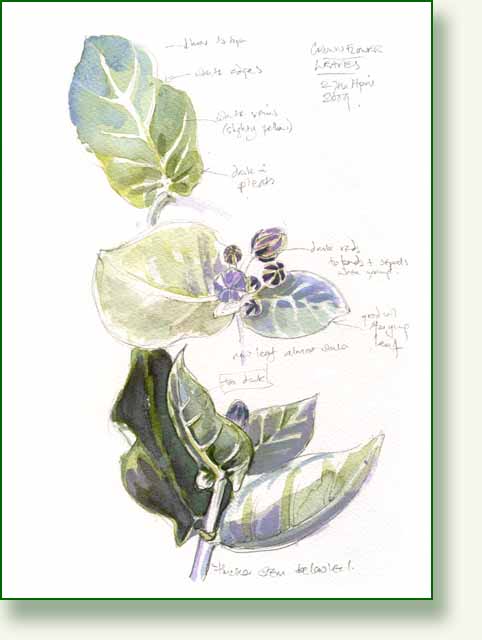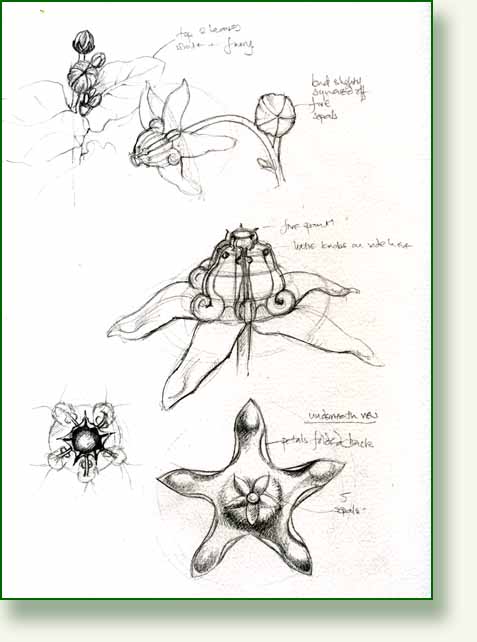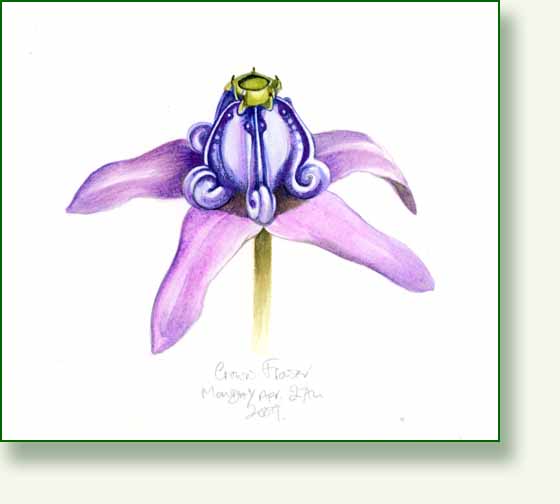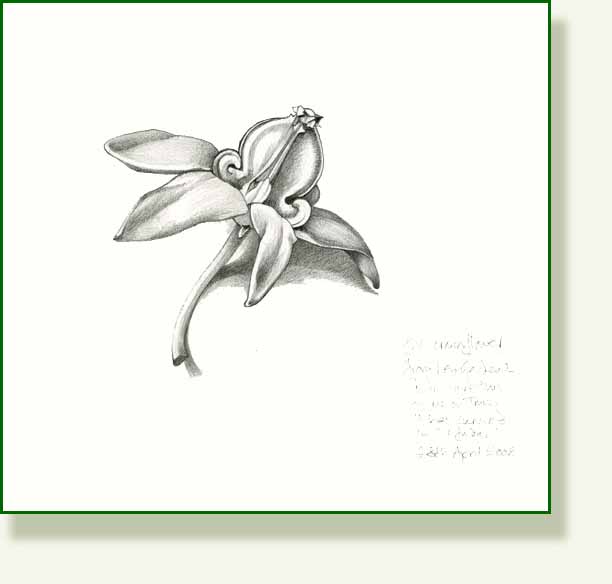I am almost finished but have also run out of time. Tomorrow I leave to go home to the UK for almost a month, to do some very tedious things including renewing visa and passport all of which require a mountain of absolutely 100% correct paperwork, undamaged fingertips (it’s a good job I am not gardening at the moment) and enormous patience.
The crown flower has been very slow, particularly this time because it had to be correctly detailed for identification purposes rather than artistic ones, so everything I did had to be measured and very careful. I don’t really enjoy the measuring but can see its importance, and at times like this, a microscope would have come in handy.
I have also had some more ant problems, not of course from “Ant” who remains my faithful companion, but from an army of tiny ants who career about the drawing and smudge themselves into the surface of the paper. They appear from nowhere, love the milkweeds and lodge in every nook and cranny of my desk. At the slightest movement they employ scatter tactics and fan out across everything. Fatalities have occurred, mainly it seems on pristine parts of my white paper. My greatest aim, so far on the course, is to finish a submission with unmarked paper… some hope…
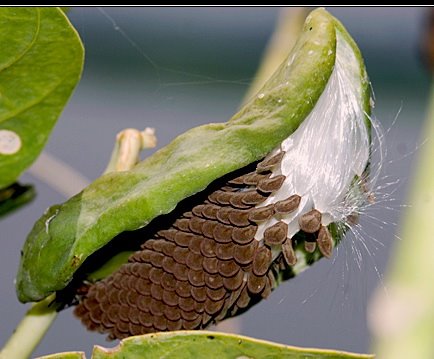
Super photo of the pod ( do I really need my own real, live one??) by Ram Thakur from Trek Nature here
The pods are typical of the other milkweeds and, to me, are one of the more interesting parts of this curious plant.
I am beginning to understand a little more about the paint handling for this very exacting style of work and am very keen to get onto some subjects of my own choosing and design. I hope to get to Kew while I am in the UK as there is an exhibition of botanical work referencing plants that have an economic value.. that’s my kind of plant! Beautiful and useful.
I have had to leave this unfinished as, despite having returned to the plant 5 times over two weeks there are still no seed pods.. and so there remains an “optimistic gap” for the pod.
“Optimistic gaps” are very useful things generally in life and some of my very favourite things. They hold the promise of perfection and are generally much better left as gaps than filled.
The next 3 weeks are definitely an Optimistic Gap, as I am still not quite sure what I will be doing or exactly where. After working so hard this year for the exhibition, freelance work and assignments I do feel in need of some input time. Time to just look at the world that exists beyond the 4 corners of my drawing board to which I feel I have been somewhat unwillingly chained recently.
I am optimistically taking my sketch book which I hope won’t remain an empty gap.
_______________________________________________


